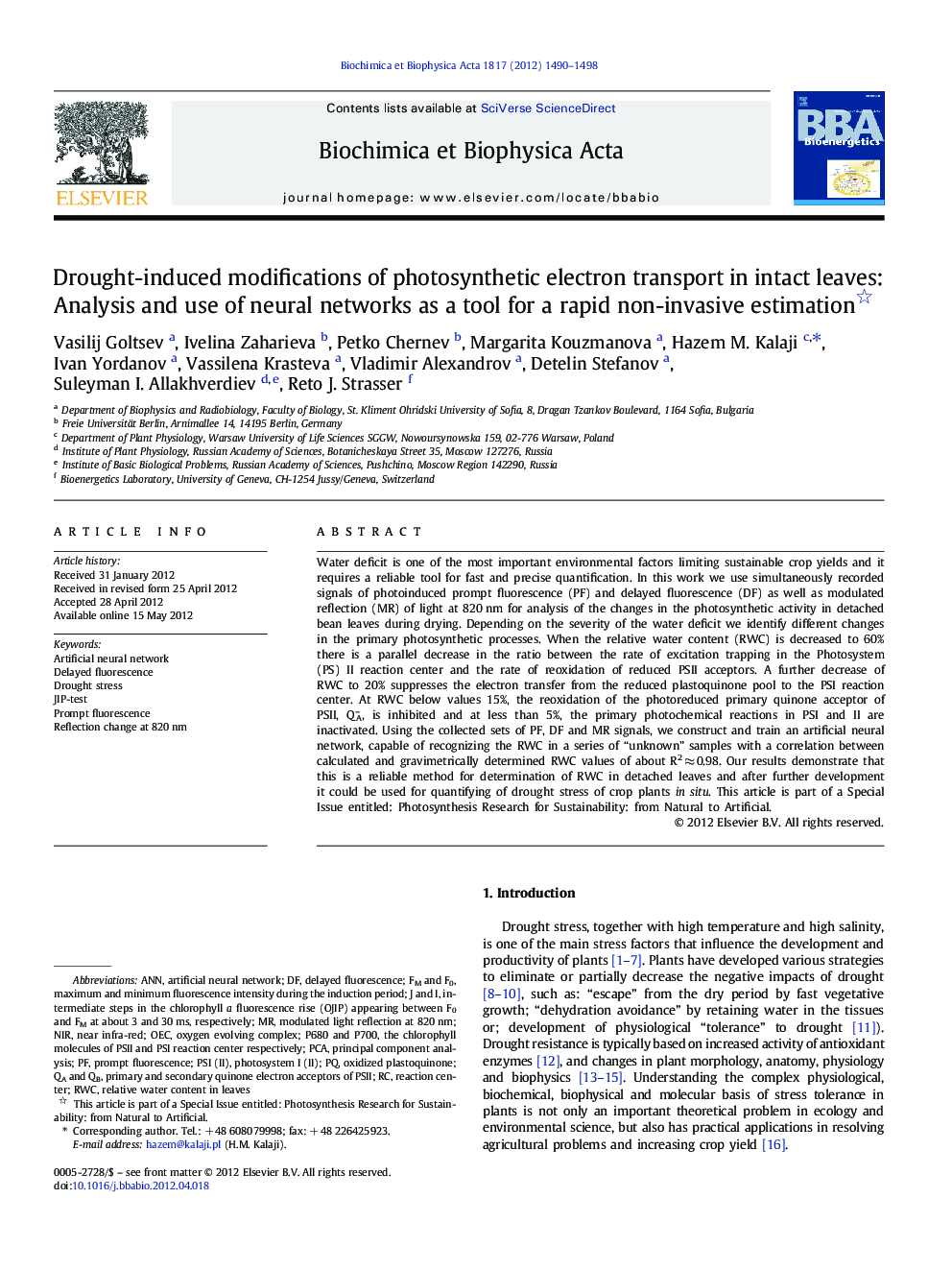| Article ID | Journal | Published Year | Pages | File Type |
|---|---|---|---|---|
| 1942425 | Biochimica et Biophysica Acta (BBA) - Bioenergetics | 2012 | 9 Pages |
Water deficit is one of the most important environmental factors limiting sustainable crop yields and it requires a reliable tool for fast and precise quantification. In this work we use simultaneously recorded signals of photoinduced prompt fluorescence (PF) and delayed fluorescence (DF) as well as modulated reflection (MR) of light at 820 nm for analysis of the changes in the photosynthetic activity in detached bean leaves during drying. Depending on the severity of the water deficit we identify different changes in the primary photosynthetic processes. When the relative water content (RWC) is decreased to 60% there is a parallel decrease in the ratio between the rate of excitation trapping in the Photosystem (PS) II reaction center and the rate of reoxidation of reduced PSII acceptors. A further decrease of RWC to 20% suppresses the electron transfer from the reduced plastoquinone pool to the PSI reaction center. At RWC below values 15%, the reoxidation of the photoreduced primary quinone acceptor of PSII, QA–, is inhibited and at less than 5%, the primary photochemical reactions in PSI and II are inactivated. Using the collected sets of PF, DF and MR signals, we construct and train an artificial neural network, capable of recognizing the RWC in a series of “unknown” samples with a correlation between calculated and gravimetrically determined RWC values of about R2 ≈ 0.98. Our results demonstrate that this is a reliable method for determination of RWC in detached leaves and after further development it could be used for quantifying of drought stress of crop plants in situ. This article is part of a Special Issue entitled: Photosynthesis Research for Sustainability: from Natural to Artificial.
► We evaluated drought induced modification of photosynthetic activity in bean plants. ► The functional state was monitored by PF, DF and light reflection at 820 nm. ► We found 4 sequential steps of photosynthetic machinery inactivation at desiccation. ► We developed artificial neural networks to determine leaf water content efficiently.
